
Today’s Tour Guide: Musclebunny
Mardi
Gras
New Orleans, LA
February 27, 2001
What
you need to know to attend the world's biggest party
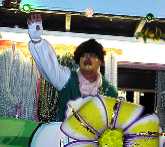
Mardi Gras always falls on the Tuesday that is 46 days
before Easter. It is always the day before Ash Wednesday,
which is the start of Lent. Carnival refers to the season
of revelry before Mardi Gras. It begins officially on
Jan. 6, which is known as Twelfth Night or Kings' Day. It
was so named because it falls 12 days after Christmas, on
the day the Wise Men are said to have reached Bethlehem.
Carnival celebrations fall into two categories: public
and private. The private celebrations are balls, held by
clubs called krewes. Some krewes let anyone join, while
others are exclusive and made up mostly of FONOF (fine
old New Orleans families). The first Carnival ball of the
season is always the Twelfth Night Ball, held on Jan. 6.
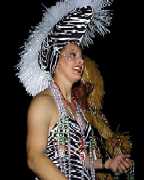 Most krewes are
named for figures in Greek mythology, like Bacchus for
the god of wine or Orpheus for the god of music (no
coincidence the latter was co-founded by Harry Connick
Jr.). The public celebrations take the form of parades,
sponsored by the same krewes that hold the balls for
members only. Not every krewe has a parade, although
every krewe will throw a party for its members. A very
few krewes allow the public to buy tickets to their balls
- Endymion and Orpheus, for example. About 70 groups in a
four-parish area around New Orleans hold parades. Most krewes are
named for figures in Greek mythology, like Bacchus for
the god of wine or Orpheus for the god of music (no
coincidence the latter was co-founded by Harry Connick
Jr.). The public celebrations take the form of parades,
sponsored by the same krewes that hold the balls for
members only. Not every krewe has a parade, although
every krewe will throw a party for its members. A very
few krewes allow the public to buy tickets to their balls
- Endymion and Orpheus, for example. About 70 groups in a
four-parish area around New Orleans hold parades.
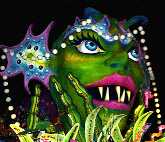
The parade season officially begins on the second Friday
before Mardi Gras, although the parade calendar is
expanding. At the beginning of the season, parades are
held on weekends only, then become more frequent until
the week prior to Mardi Gras. Then, there's at least a
parade a day. There are nine parades on Mardi Gras, most
notably Rex.
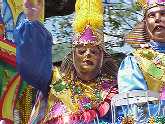 Rex (don't say
"king of"; it's redundant) - always a prominent
New Orleans businessman - is considered the king of Mardi
Gras. (You should, therefore, sneer when you hear some
Hollywood matinee idol announce to Jay Leno that he will
be "king of the Mardi Gras." He won't.) The
colors of Carnival are purple, green and gold, chosen in
1872 by that year's Rex. The 1892 Rex parade gave the
official colors meaning: purple for justice, green for
faith and gold for power. Rex (don't say
"king of"; it's redundant) - always a prominent
New Orleans businessman - is considered the king of Mardi
Gras. (You should, therefore, sneer when you hear some
Hollywood matinee idol announce to Jay Leno that he will
be "king of the Mardi Gras." He won't.) The
colors of Carnival are purple, green and gold, chosen in
1872 by that year's Rex. The 1892 Rex parade gave the
official colors meaning: purple for justice, green for
faith and gold for power.
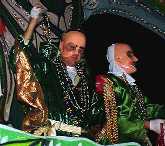 Every parade has a
theme, usually borrowed from mythology, history or
Hollywood. Most parades have mock royalty, kings and
queens and dukes and duchesses, either drawn from the
ranks of the krewe's members or celebrities. All parade
riders throw trinkets - beads, doubloons, small toys,
candy - from the floats to the crowds. These are called
"throws." Parades consist of anywhere from 10
to 40 floats carrying krewe members, marching bands,
dance groups, costumed characters and the like. Some
parades are small and suburban, others downtown and
lavish. Every parade has a
theme, usually borrowed from mythology, history or
Hollywood. Most parades have mock royalty, kings and
queens and dukes and duchesses, either drawn from the
ranks of the krewe's members or celebrities. All parade
riders throw trinkets - beads, doubloons, small toys,
candy - from the floats to the crowds. These are called
"throws." Parades consist of anywhere from 10
to 40 floats carrying krewe members, marching bands,
dance groups, costumed characters and the like. Some
parades are small and suburban, others downtown and
lavish.

The one ubiquitous food of the Carnival season is the
king cake. Sweet roll-like dough is shaped into a big
circle, cooked and brushed with purple, green and gold
sugar or icing. Then a plastic baby, representing the
Christ child, is tucked inside. Whoever gets the piece of
cake containing the baby must, by tradition, provide the
next king cake. Nowadays, king cakes come with a variety
of fillings from chocolate to pineapple.
|